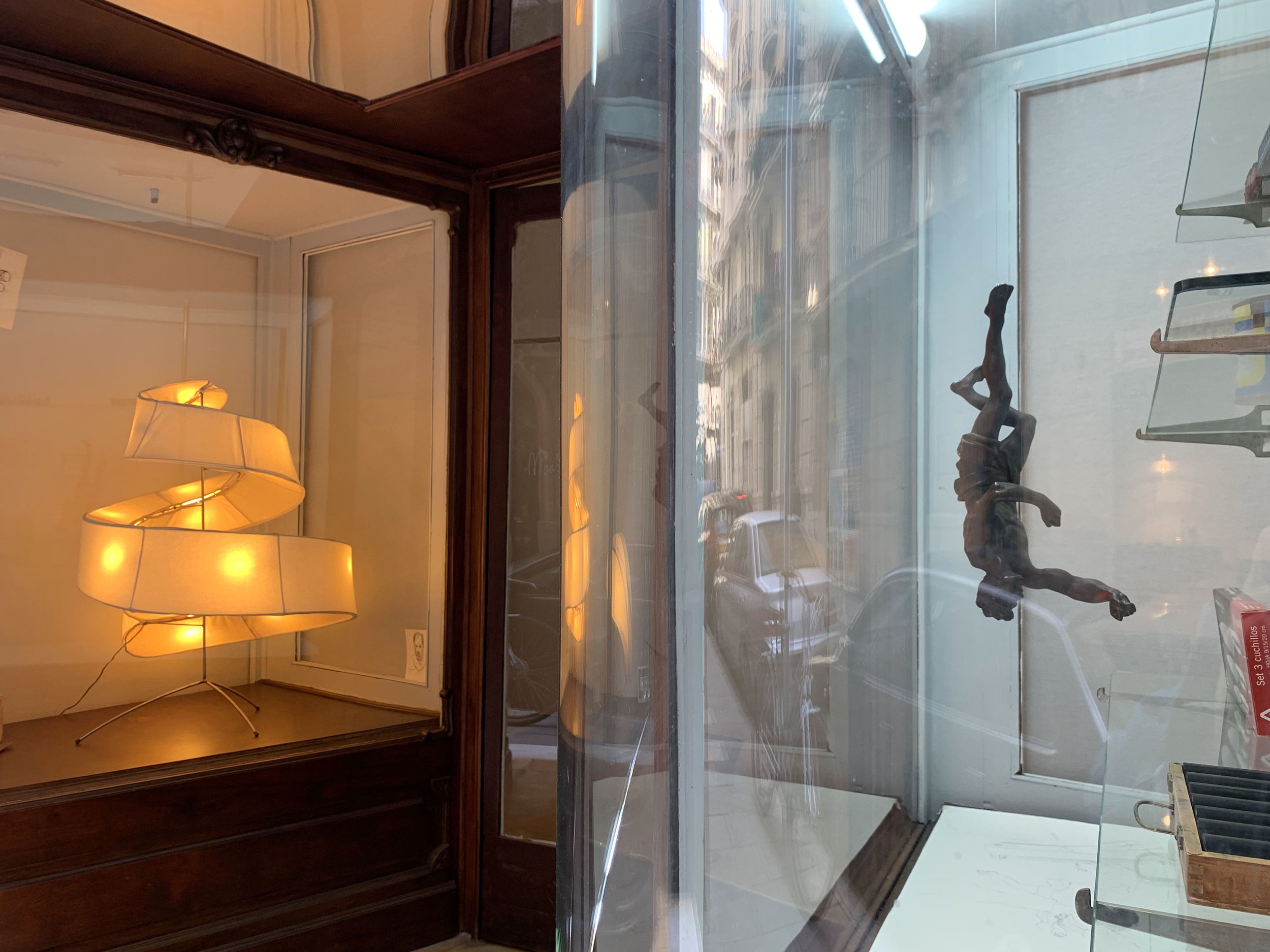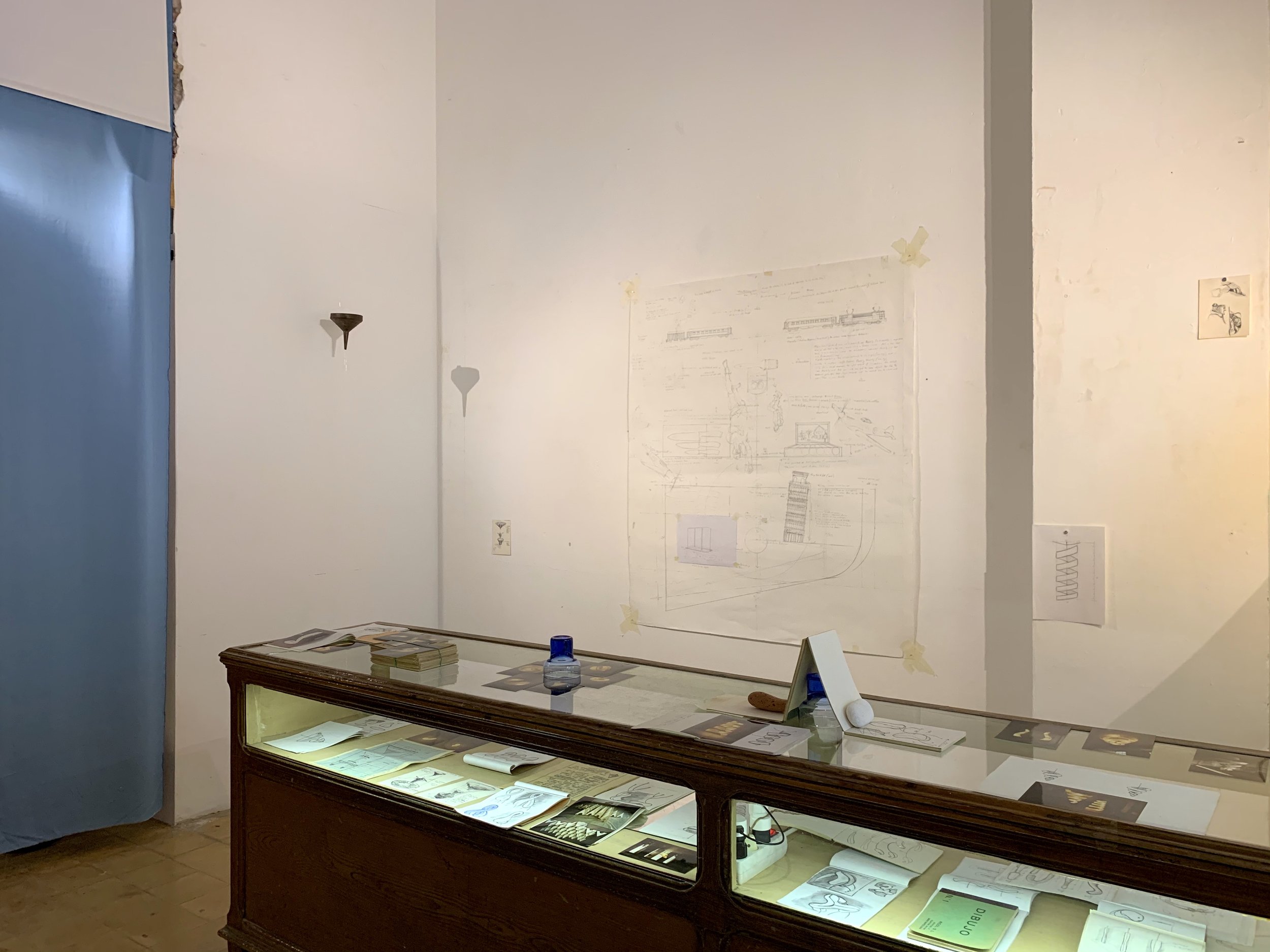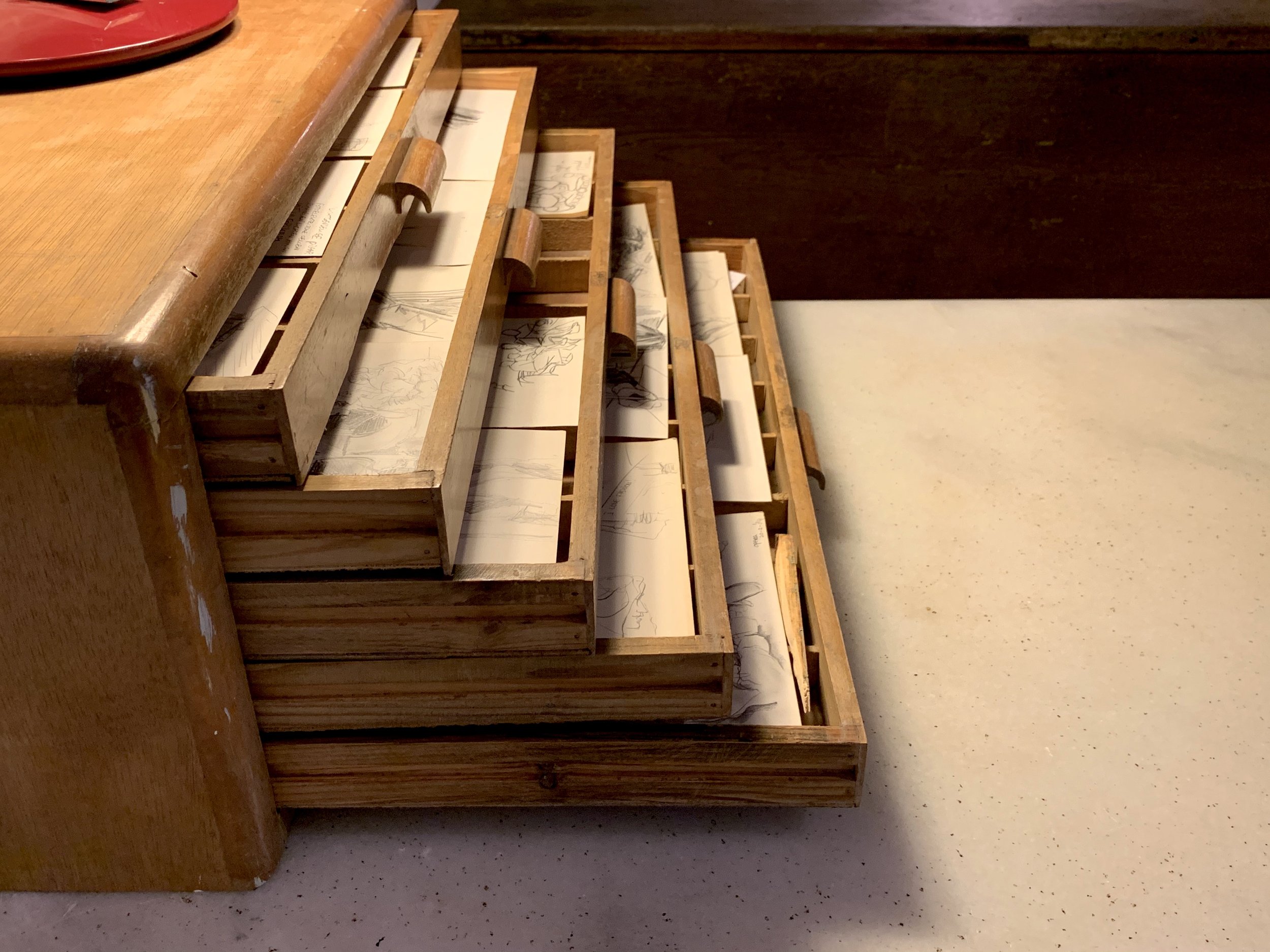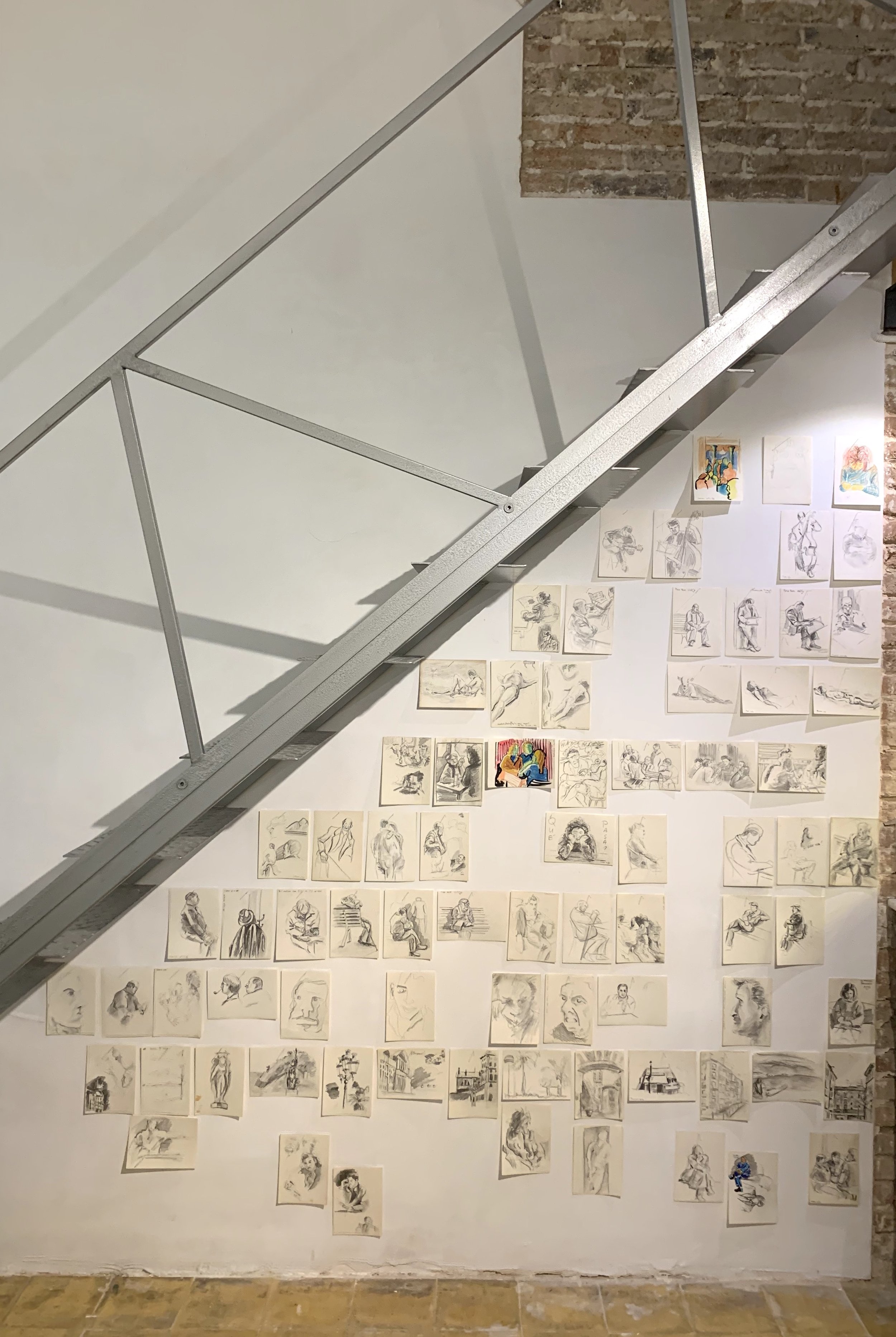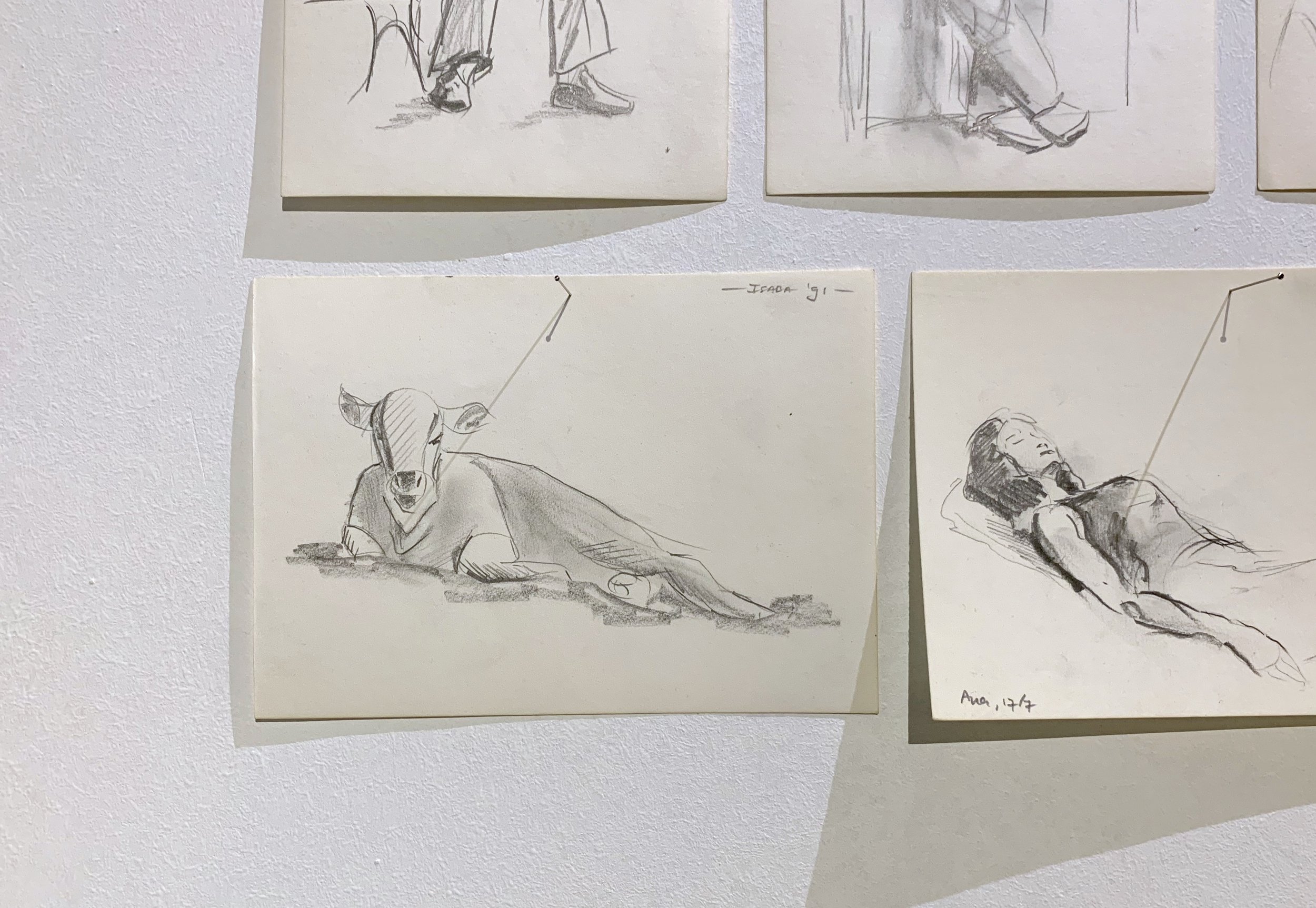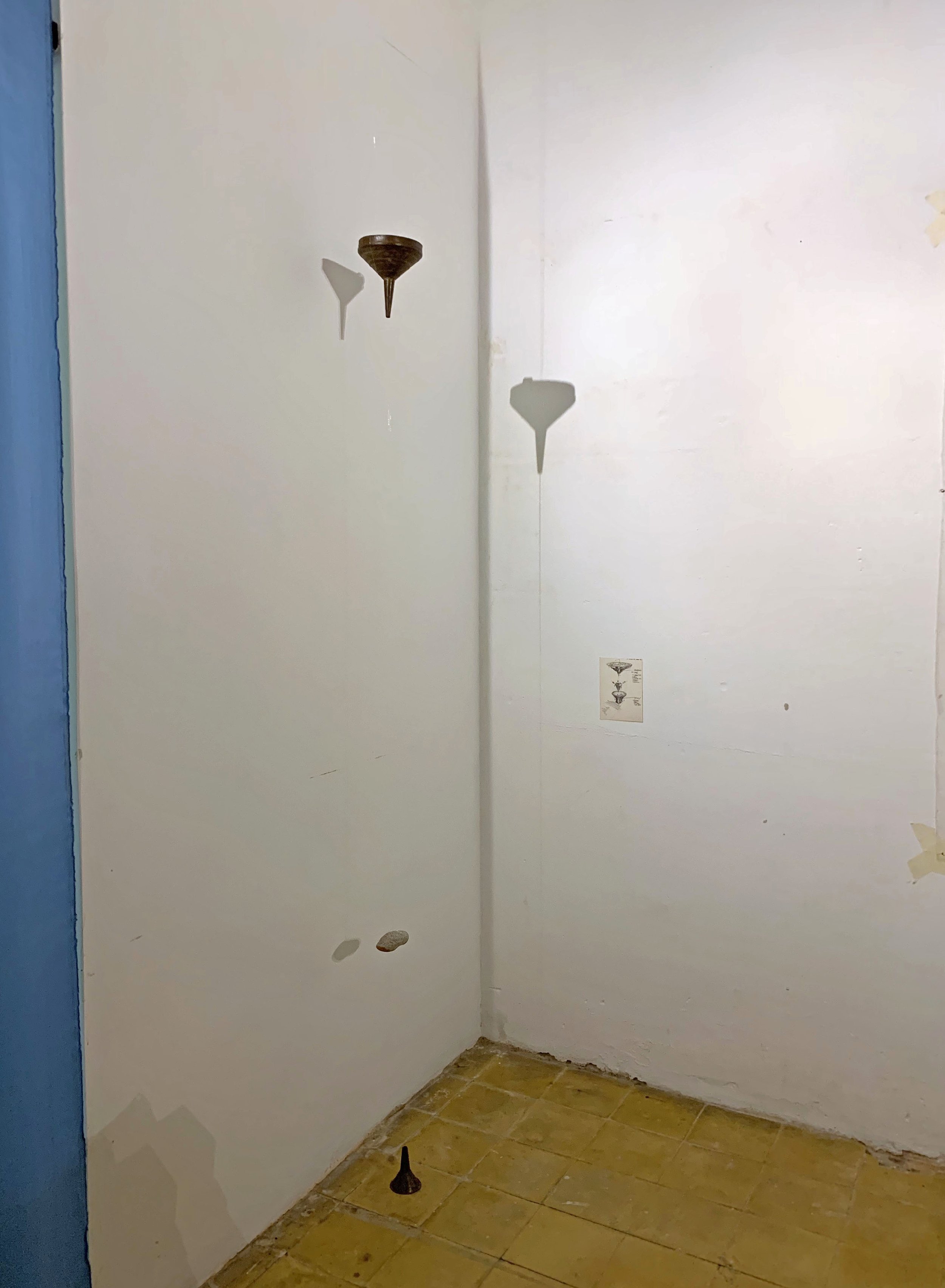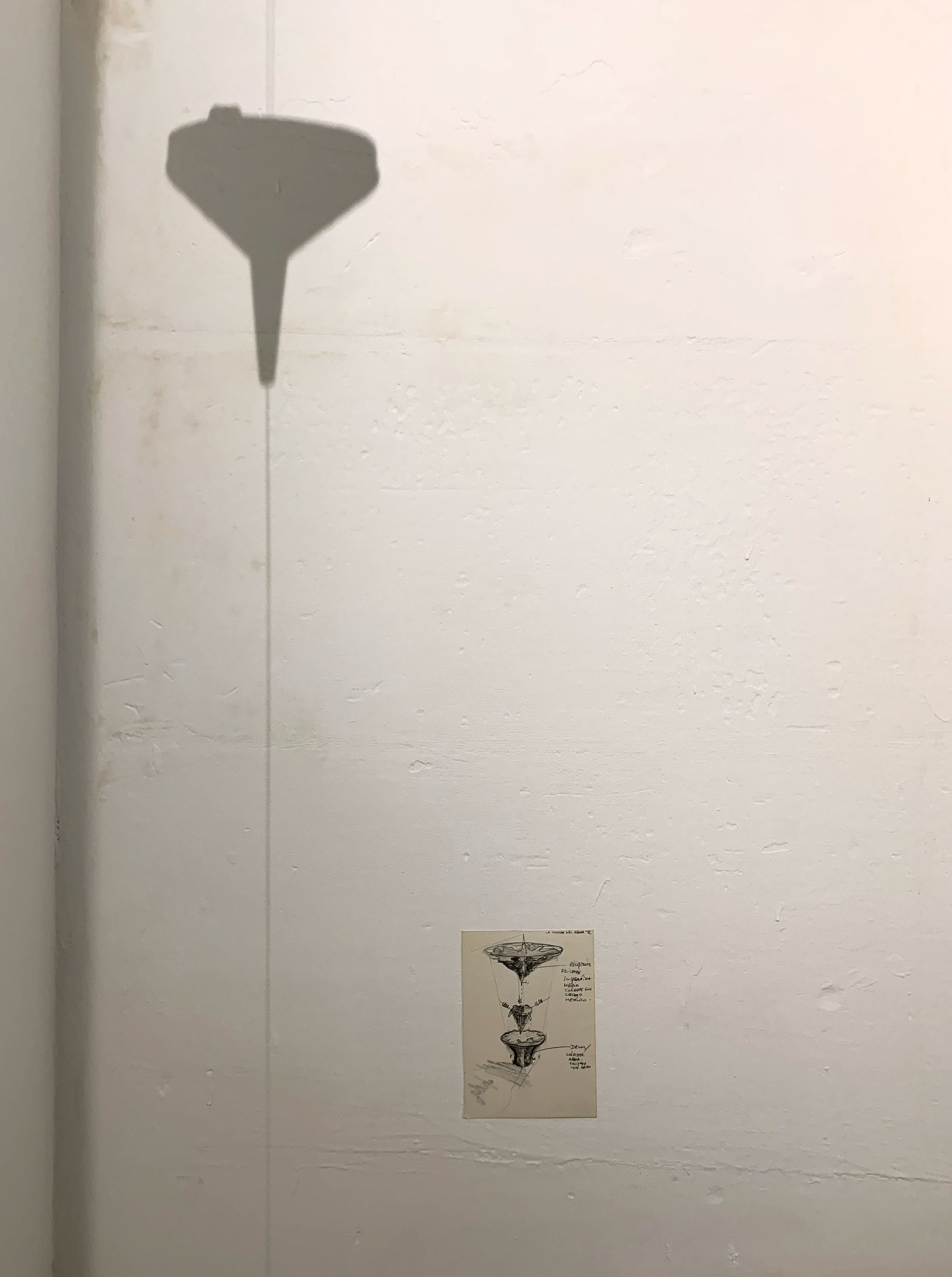DOUBLE DUTCH
03.30 - 04.20.2022
Maarten Renes & Vince van Geffen
Two dutch artists find themselves as expatriate ghostly riders on a sea storm of identities, sailing through homesickness while hiding under linguistic diversity.
Vince van Geffen’s installation ‘The Falling Man’ addresses a man in free fall from a (Twin) Towering height to what might or might not be home. His work asks where our place is.
Maarten Renes’s installation ‘Archival Poetics’ is a dig into his Barcelona artwork from the 80’s onwards, revealing a horizontal movement towards a sense of belonging across different artistic disciplines, including illuminated sculptures and drawings.
Geffen and Renes try to meet in the intersection point of the vertical and the horizontal, in a doubledutch encounter across two display windows in which imagery speaks more than words.
Getting Dutch people to meet abroad and become friends may be a bit of a tour de force. Most fellow Dutchmen and Dutchwomen we might get to know when abroad, we observe from a distance and don’t engage with. We’re a rare and odd kind, the Dutch expatriate, looking for the international rather than the national, the unfamiliar rather than the familiar, confusing the humble with the aloof. We’d rather speak any language but Dutch, and our nationality often remains a mystery, hiding under linguistic diversity, even to ourselves. We pass for others while never revealing our Selves. Live and let live, we say, tolerance. We linger in the margins and sail across borders, in certain ways, in the wake of the feared Flying Dutchman, the ghostship that would never make port or reach home. It is an 18th c projection of doom onto a wealthy, naval empire after its golden age has lost its gloss and now invites us to a never-ending homelessness and homesickness. We are, to speak or sing with Jim Morrison, ghostly riders on the storm that threaten to drown in a sea of identities. Vince van Geffen’s project addresses a man in free fall from a (Twin) Towering height to what might or might not be home. His work picks up on some of the above concerns, and asks where our place is. Maarten Renes’s archival dig into his Barcelona art work reveals a horizontal movement towards a sense of belonging across different artistic disciplines. Vince and Maarten try to meet in the intersection point of the vertical and the horizontal, in a doubledutch encounter across two display windows in which imagery speaks more than words.
Vince van Geffen
The Falling Man , Mixed media, 2021-2022
(While Fiona fell, Richard drew.)
I have come to look upon this modest installation as an exercise in association.
Last summer I was asked by Fiona Fell to exhibit something in one of CasCaDas ArtSpace exhibition vitrines. The first thought that entered my mind when I examined the windows, each equipped with an étagère made up of three glass shelves, was that of falling. I tend to stick to such unconscious impulses for they seem sincerer to me than anything made up.
During the months before the exhibition was due, association after association piled itself upon the initial image of something falling. Something turned into a man, originally the one who jumped from the North Tower and was famously photographed by Richard Drew, later complemented by other falling men, ranging from Icarus to Charles, Reggie´s unfortunate husband in Stanley Donen´s Charade, who was thrown from a moving train. Such associations led to other ones, and again to other ones, and at a certain point the totality became so complex that it forced me to draw a map which laid bare the associative process and enabled me to find my way back. This map, which by now I consider of more interest than the installation itself, is on show as well. I regard it as a testimony of our ability to relate, as well as of our failure to concentrate on a single thing.
*The installation itself shows some of the key elements in this process of association.
Maarten Renes
Archival Poetics, Mixed media, 2022
Asked to present some of my sketchbooks at a show at CasCaDas Art Space, I delved into old cardboard boxes long forgotten and hidden in the dark, stuffy corners of my home. The sensation of reviewing and recovering these pocket-size sketchbooks that formed a steady reference in my garb of the late 1980s and early 1990s was a welcome encounter with my own past. It resuscitated images, smells, sensations long forgotten but still in an accessible, rescuable place. Yet, now working as an academic in literature, the procedure of viewing, selecting and casting aside what I long deemed unfit to show has turned into a somewhat uncanny experience of an intense past I had chosen to waylay for a complex series of reasons. I was happy to see that a sort of poetics was developing through my probing hands and eyes, a poetics that traced the changing face of Olympic Barcelona. The sketches explore life in the downtown area, capturing the raw human life that assembled there in all its beauty and ugliness: the Ramblas, Plaza Real, Cafè de l’Opera, Plaza del Pi, and Cafè Zurich were my daily haunts. Sitting on benches or at tables, I’d pull out my little booklets and scratch life into them. Quite a few sketches came furnished with scraps of language, which seemed to be ushered in by the drawings themselves and so complemented the image. I did this for a number of years until, one day, the squalor of Plaza Real hit me and I changed my approach and focus.
Parallel to sketching the rough but attractive pull of Barcelona street and bar life, I had begun to experiment with illuminated sculpture, a sophisticated way of lamp-making that incorporated and merged my knowledge of pattern-making, tailoring, sewing, building, painting and drawing into a world that in all its exterior gloss was infinitely interior as well. My sketch work became more inward-looking and tried to capture the essence of the flow of form and the shades of atmospheric light conceived and achieved, leading to studies of construction and their execution. The exhibited lamps cover 15 years of studio activity, which started in the neighbouring Riereta street; then moved behind the Plaza Real, to Escudillers street; and eventually ended up in one of Poble Nou’s industrial warehouses.
The fifteen years I dedicated to these creative pursuits were formative in many ways and served to give more depth to my literary studies and interest in language and other cultures. Yet I miss the freedom and madness of artistic expression and the impact of its beauty, so recovering these “archival poetics” (derived from the Ancient Greek verb poiein, "to make or compose”), is timely after a long period of only writing poetry. This show, then, comments on the lateral relational and vertical nature of my creative work as well as Vince van Geffen’s by putting it into conversation with each other to address its common Dutch roots. It is a doubledutch befriending at heart that attempts to lay bare how we synch with each other across language and image—and how not.

